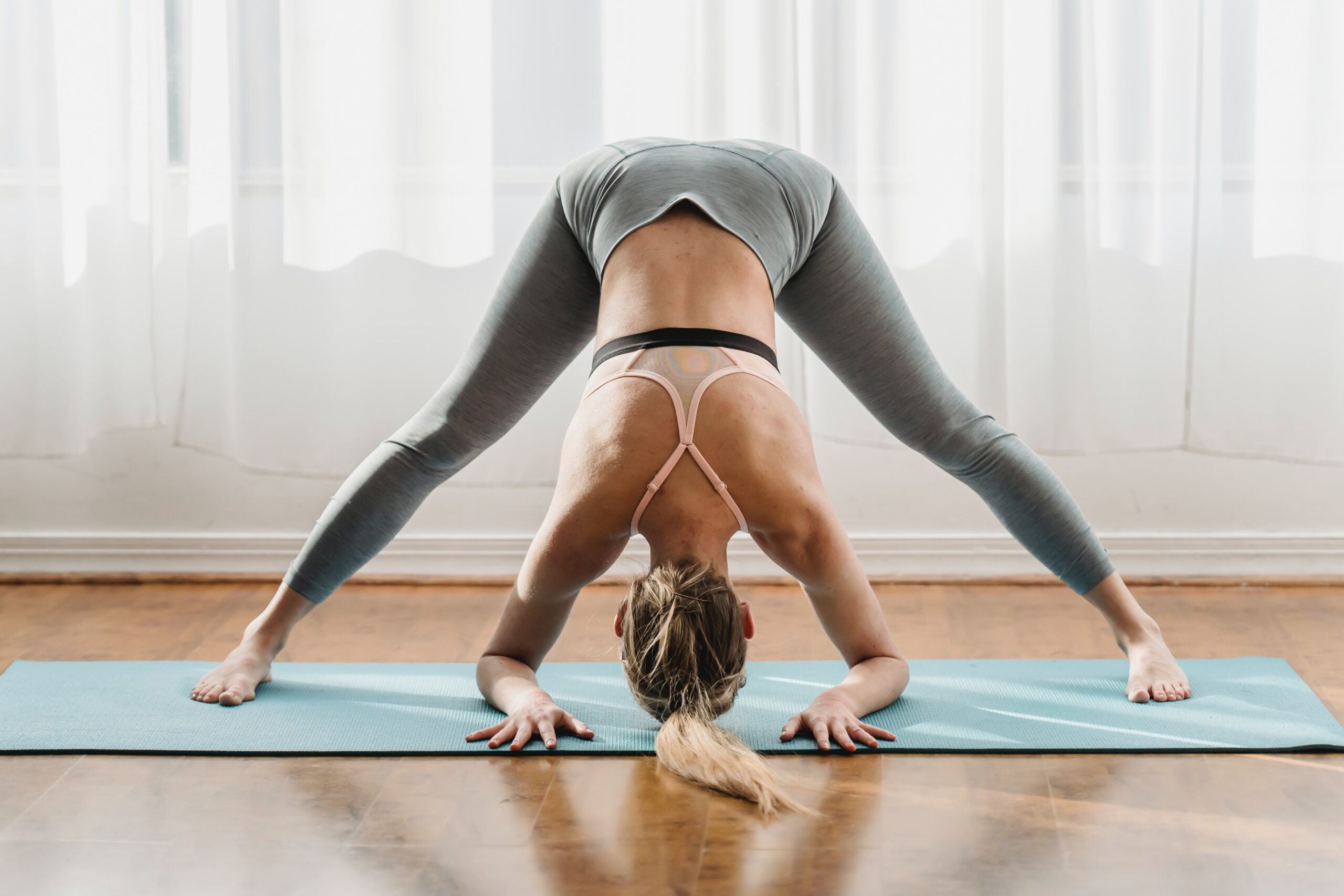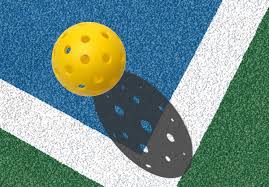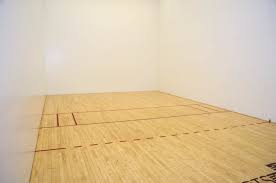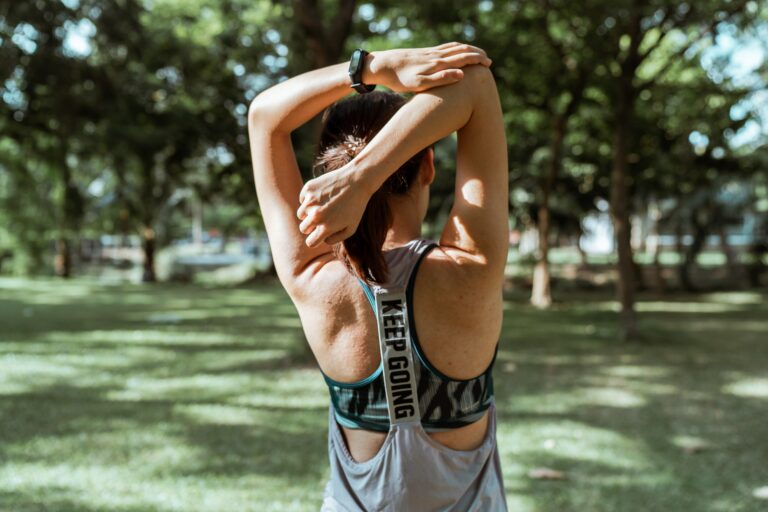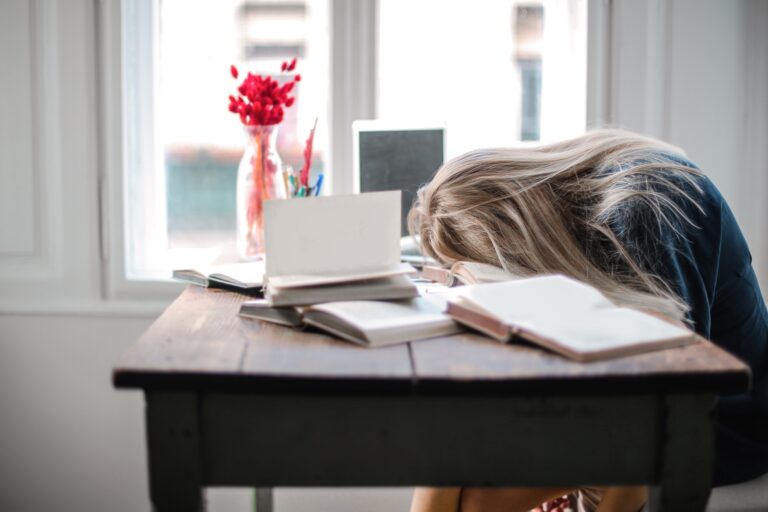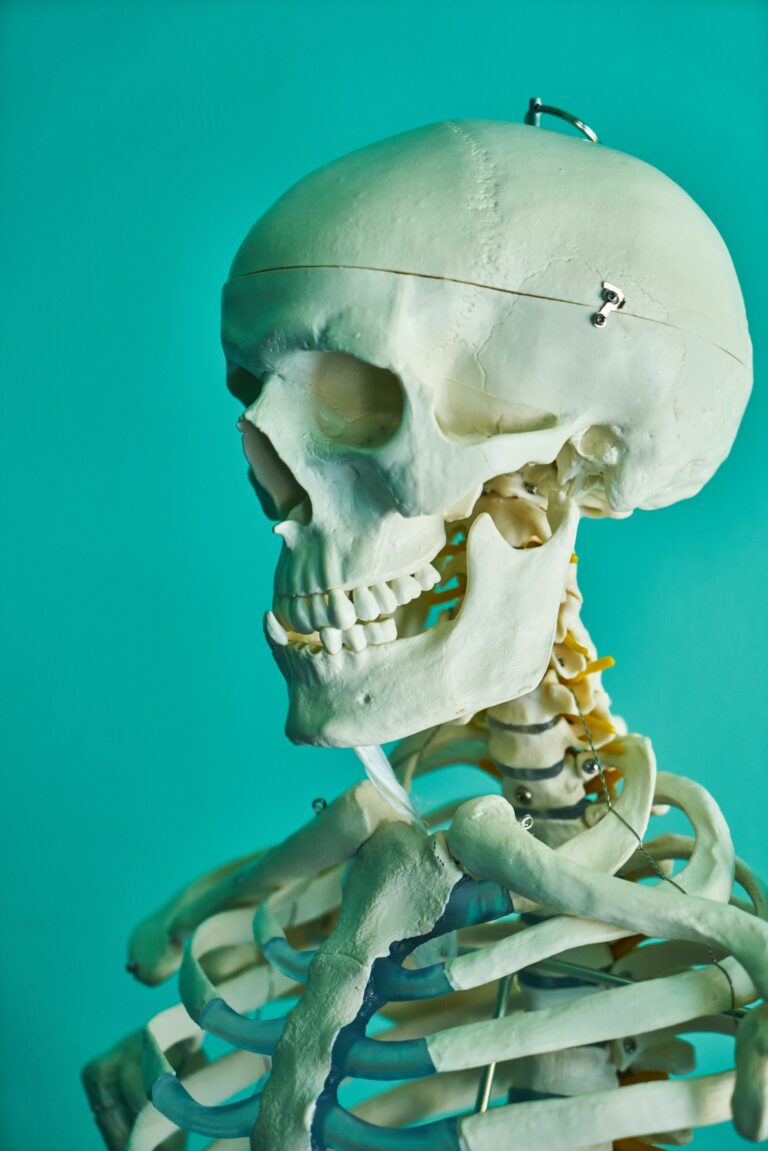70 Best Exercises for Relieving Low Back Pain
A guide to strengthening and stretching for low back pain
Low Back Pain Overview
Low back pain refers to discomfort, pain, or stiffness experienced in the region of the lower back, which is located between the ribcage and the pelvis. It is one of the most common musculoskeletal conditions, affecting people of all ages. Low back pain can range from mild, temporary discomfort to severe, chronic pain that significantly impacts daily activities and quality of life.
The specific characteristics of low back pain can vary from person to person. Some individuals may experience a dull, achy sensation, while others may feel sharp or shooting pain. The pain can be localized to the lower back or may radiate into or from the buttocks, hips, or down the legs. It may be accompanied by muscle stiffness, limited range of motion, or difficulty with certain movements.
Low back pain can have various causes including muscle strain, disc problems, joint dysfunction, or underlying medical conditions. It can be triggered by factors such as poor posture, improper lifting techniques, sedentary lifestyle, obesity, or traumatic injuries.
In many cases, low back pain resolves on its own within a few days or weeks with conservative treatments such as rest, gentle stretching, over-the-counter pain medications, and applying heat or cold packs.
Causes of Low Back Pain?
Low back pain has a variety of causes but there are more common culprits which will be listed below. It is important to understand that the body is connected and that one area may lead to another area being affected. This is not an exhaustive list but are some possible causes to consider when looking at your low back pain
Muscle or Ligament Strain: Overstretching or tearing of the muscles or ligaments in the low back can result from sudden movements, lifting heavy objects, or poor body mechanics.
Disc Problems: Intervertebral discs can herniate (protrude) or degenerate over time, leading to compression of nearby nerves and resulting in low back pain.
Arthritis: Osteoarthritis or other forms of arthritis can affect the joints in the spine, leading to pain and stiffness in the low back.
Hips and Pelvis: Problems in the hip joints, such as arthritis, labral tears, or bursitis, can cause pain that radiates to the low back. The hip joint is closely connected to the low back, and issues in this area can refer pain due to shared nerve pathways. For example, hip arthritis can result in altered mechanics and increased stress on the low back, leading to pain and discomfort in that region. Similarly, conditions like labral tears or bursitis can cause pain that is felt in the low back due to the interconnected nature of the hip and lower back structures. Proper diagnosis and targeted treatment of hip problems are essential for addressing the root cause of the pain and providing effective relief.
Sacroiliac Joints: Dysfunction or inflammation of the sacroiliac joints, which connect the sacrum and ilium bones, can cause pain in the low back region. The sacroiliac joints play a crucial role in providing stability and transferring forces between the spine and the pelvis. When these joints are compromised, such as due to injury, arthritis, or pregnancy-related changes, pain can be referred to the low back. The pain may be localized or may radiate into the buttocks or upper thighs. Accurate diagnosis and appropriate management of sacroiliac joint dysfunction are important for reducing low back pain and restoring normal function.
What Can Exercise Improve?
Exercise and stretching can be beneficial for various conditions that can cause low back pain. Here are some of the conditions for which exercise and stretching are commonly recommended:
Muscle Strain: Exercise and stretching can help with muscle strain by promoting flexibility, increasing blood flow to the affected area, and improving muscle strength and endurance. Targeted exercises and stretches can help alleviate pain, reduce muscle imbalances, and prevent future strains.
Disc Problems: Exercise and stretching can play a role in managing certain disc problems, such as degenerative disc disease or mild disc herniation. Specific exercises and stretches can help strengthen the muscles that support the spine, improve posture, and reduce pressure on the discs. However, it’s important to consult with a healthcare professional to determine the appropriate exercises and avoid movements that may worsen the condition.
Joint Dysfunction: Exercise and stretching can help address joint dysfunction, such as sacroiliac joint dysfunction or facet joint syndrome. Strengthening exercises for the core, hips, and glutes can provide stability and support to the joints, reducing pain and improving function. Stretching exercises can help improve joint mobility and flexibility.
Muscle Imbalances: Exercise and stretching can be effective for addressing muscle imbalances in the low back and surrounding areas. Strengthening exercises for the core, glutes, and hip muscles can help correct imbalances and provide better support to the low back. Targeted stretching can help alleviate muscle tightness and improve flexibility.
Postural Issues: Exercise and stretching can play a role in correcting postural issues that contribute to low back pain. Strengthening exercises for the back extensor muscles, combined with stretching exercises for tight chest and hip muscles, can help improve posture and reduce strain on the low back.
General Fitness and Preventive Measures: Regular exercise and stretching can improve overall fitness, including core strength, flexibility, and cardiovascular health. Maintaining a healthy weight, engaging in regular physical activity, and incorporating exercises that target the low back and surrounding areas can help prevent low back pain and reduce the risk of recurrence.
If you want to learn more about how exercise can improve low back pain, here is a link to a great research article. Hayden JA, Ellis J, Ogilvie R, Malmivaara A, van Tulder MW. Exercise therapy for chronic low back pain. Cochrane Database Syst Rev. 2021 Sep 28;9(9):CD009790. doi: 10.1002/14651858.CD009790.pub2. PMID: 34580864; PMCID: PMC8477273.
Core Strength and Low Back Pain
Core weakness can contribute to low back pain by:
- Lack of Spinal Stability: The core muscles, including the deep abdominal muscles (transverse abdominis) and back extensor muscles (multifidus), play a crucial role in stabilizing the spine. When these muscles are weak, they are unable to provide adequate support and stability to the spinal column. As a result, the spine may be subjected to excessive stress and strain during everyday movements, leading to increased pressure on the structures of the low back, such as the discs, joints, and ligaments. This can result in pain and discomfort in the low back region.
- Increased Load on the Spine: Weakness in the core muscles can result in compensatory movements and increased load on the low back. When the core muscles are unable to effectively distribute forces and provide stability, the low back muscles, including the erector spinae, may have to work harder to maintain proper alignment and control during activities such as lifting, bending, or twisting. This can lead to overuse and fatigue of the low back muscles, causing pain and increased vulnerability to injuries.
- Altered Movement Patterns: Core weakness can lead to compensatory movement patterns, where other muscles and structures take on the workload that should be handled by the core muscles. For example, individuals with weak core muscles may rely more on the low back muscles or hip muscles to perform tasks that require stability or force generation. These compensatory patterns can lead to imbalances, muscle strain, and increased stress on the low back, contributing to pain and dysfunction.
- Poor Posture: Weak core muscles can contribute to poor posture, such as excessive lumbar lordosis (swayback) or excessive thoracic kyphosis (rounded upper back). These postural deviations can place additional stress on the structures of the low back and disrupt the normal alignment of the spine. Over time, this can lead to musculoskeletal imbalances, increased pressure on the discs and joints, and subsequent low back pain.
Addressing core weakness through targeted strengthening exercises can help improve spinal stability, enhance load distribution, promote proper movement patterns, and support better posture.
Importance of the Areas Around The Low Back
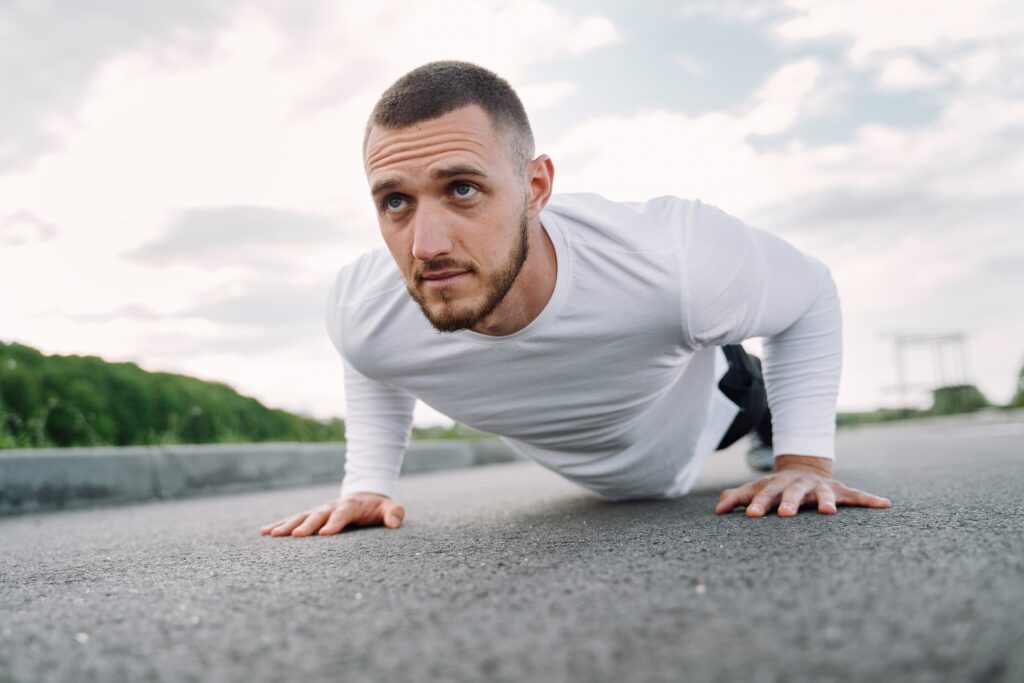
Certainly! When addressing low back pain, it’s important to recognize that the body is a connected system, and dysfunction or imbalances in one area can impact other areas. Therefore, focusing on exercising and stretching not only the low back but also other related areas can be beneficial for relieving low back pain. Here are a few examples:
- Core Muscles: Strengthening the core muscles, including the abdominal muscles, obliques, and back extensors, is crucial for supporting the low back. A strong core provides stability and helps distribute forces properly, reducing the load on the low back. By improving core strength, the low back is better supported, leading to improved posture, reduced stress on the low back structures, and decreased pain.
- Gluteal Muscles: The gluteal muscles, specifically the gluteus maximus, medius, and minimus, play a significant role in hip and pelvic stability. Weak gluteal muscles can contribute to imbalances and altered movement patterns, which can place excessive stress on the low back. Strengthening the gluteal muscles through exercises like squats, lunges, and hip thrusts can help improve hip stability and reduce strain on the low back.
- Hip Flexors: Tightness in the hip flexor muscles, such as the iliopsoas and rectus femoris, can impact the alignment of the pelvis and increase stress on the low back. Stretching these muscles can help alleviate tension and restore proper muscle length, reducing strain on the low back and promoting better posture.
- Hamstrings: Tight hamstrings can contribute to low back pain by pulling on the pelvis, which can disrupt the natural curvature of the spine. Stretching the hamstrings can help improve flexibility, reduce stress on the low back, and promote better alignment.
- Postural Muscles: Strengthening the postural muscles, including the muscles of the upper back and shoulders, can help improve overall posture and alignment. Poor posture, such as rounded shoulders or forward head posture, can lead to increased stress on the low back. Strengthening exercises for the upper back, combined with stretching exercises for the chest muscles, can help restore balance and reduce strain on the low back.
By addressing these interconnected areas through targeted exercises and stretches, you can improve overall body mechanics, correct imbalances, enhance stability, and reduce the strain on the low back. It’s important to work with a healthcare professional, such as a physical therapist or exercise specialist, who can provide appropriate guidance and develop an individualized exercise program based on your specific needs and limitations.
70 Exercises and Stretches
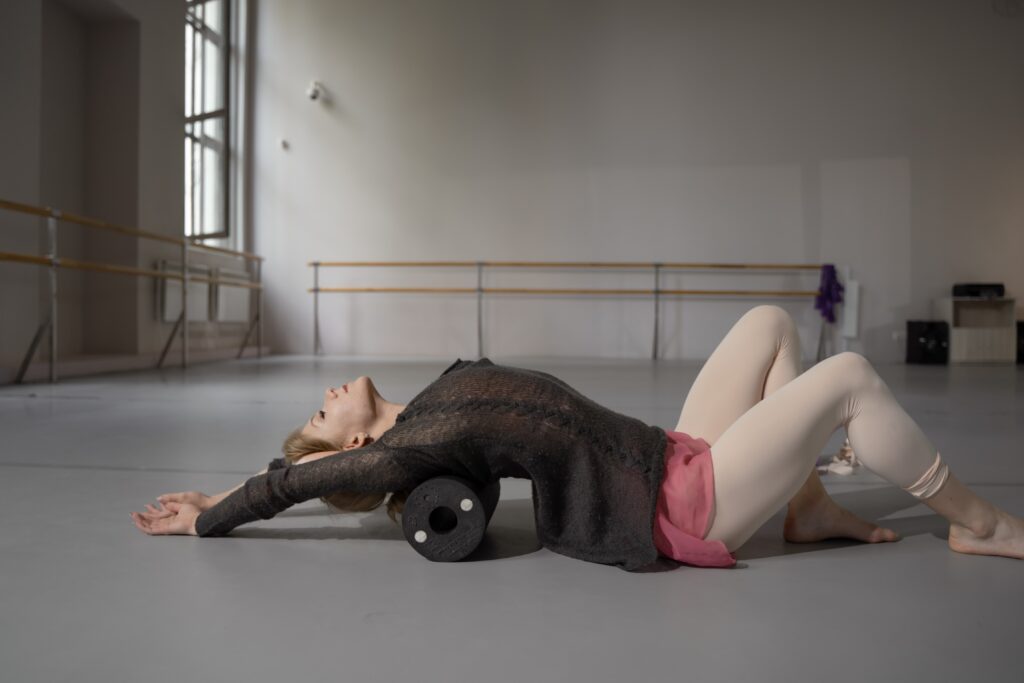
- Cat-Camel Stretch: Start on your hands and knees. Arch your back upward, tucking your chin to your chest (cat position). Then, lower your belly towards the ground and lift your head and tailbone (camel position). Repeat the movement slowly.
- Pelvic Tilt: Lie on your back with knees bent and feet flat on the floor. Gently press your lower back into the floor by tilting your pelvis upward. Hold for a few seconds and release. Repeat.
- Bridge Exercise: Lie on your back with knees bent and feet flat on the floor. Press through your heels, lift your hips off the ground, and create a straight line from your knees to shoulders. Hold for a few seconds, then lower your hips back down.
- Partial Crunches: Lie on your back with knees bent and feet flat on the floor. Cross your arms over your chest. Lift your shoulders off the ground, curling your upper body towards your knees. Lower back down without fully touching the ground and repeat.
- Bird Dog Exercise: Start on your hands and knees. Extend your right arm forward while simultaneously extending your left leg backward. Keep your core engaged and avoid arching your back. Hold for a few seconds, then switch sides.
- Piriformis Stretch: Lie on your back with knees bent. Cross one ankle over the opposite knee and gently pull the uncrossed leg towards your chest until you feel a stretch in your buttocks. Hold for 15-30 seconds, then switch sides.
- Hamstring Stretch: Lie on your back with one leg extended. Loop a towel or exercise band around the foot of your other leg and gently pull it towards you until you feel a stretch in the back of your thigh. Hold for 15-30 seconds, then switch sides.
- Wall Sits: Stand with your back against a wall and slide down into a seated position, knees bent at a 90-degree angle. Hold this position for 20-30 seconds, then stand back up.
- Pelvic Clocks: Lie on your back with knees bent and feet flat on the floor. Imagine your pelvis as the center of a clock. Slowly tilt your pelvis to each number on the clock, going clockwise and counterclockwise.
- Swimming Exercise: Lie on your stomach with arms extended forward and legs straight. Lift your opposite arm and leg off the ground simultaneously, hold for a few seconds, then lower them down. Repeat with the other arm and leg.
- Knee-to-Chest Stretch: Lie on your back with knees bent and feet flat on the floor. Bring one knee towards your chest, grasping it with both hands and gently pulling it closer. Hold for 15-30 seconds, then switch legs.
- Quadruped Arm/Leg Raises: Start on your hands and knees. Lift your right arm forward while simultaneously lifting your left leg backward. Keep your core stable and maintain a straight back. Hold for a few seconds, then switch sides.
- Seated Spinal Twist: Sit on the edge of a chair with feet flat on the floor. Place your right hand on the outside of your left knee, twist your torso to the left, and look over your left shoulder. Hold for 15-30 seconds, then switch sides.
- Side Plank: Start by lying on your side with your forearm on the ground, elbow directly under your shoulder. Lift your hips off the ground, creating a straight line from your head to your feet. Hold for 20-30 seconds, then switch sides.
- Superman Exercise: Lie on your stomach with arms extended forward and legs straight. Lift your arms, chest, and legs off the ground simultaneously, squeezing your glutes and engaging your lower back muscles. Hold for a few seconds, then lower down.
- Hip Flexor Stretch: Kneel on one knee, with the other foot flat on the ground in front of you. Keeping your back straight, lunge forward, feeling a stretch in the front of your hip. Hold for 15-30 seconds, then switch sides.
- Seated Forward Fold: Sit on the edge of a chair with feet flat on the floor. Slowly bend forward from your hips, reaching towards your toes. Allow your head and neck to relax. Hold the stretch for 15-30 seconds.
- Cobra Pose: Lie on your stomach with palms on the ground, slightly in front of your shoulders. Press your palms into the ground and lift your chest off the floor, keeping your hips and legs relaxed. Hold for a few seconds, then lower down.
- Seated Figure-Four Stretch: Sit on the edge of a chair with feet flat on the floor. Cross your right ankle over your left knee, creating a figure-four shape. Gently press down on your right knee to feel a stretch in your hip. Hold for 15-30 seconds, then switch sides.
- Glute Bridge: Lie on your back with knees bent and feet flat on the floor. Press through your heels, lift your hips off the ground, and squeeze your glutes at the top. Hold for a few seconds, then lower your hips back down.
- Hip Circles: Stand with your feet shoulder-width apart. Slowly rotate your hips in a circular motion, first clockwise and then counterclockwise. Focus on controlled movements and engage your core.
- Standing Forward Bend: Stand with feet hip-width apart. Hinge at your hips and lower your upper body toward the floor, reaching for your toes or shins. Allow your head and neck to relax. Hold for 15-30 seconds.
- Child’s Pose: Start on your hands and knees, then sit back onto your heels. Extend your arms forward and lower your upper body towards the ground, resting your forehead on the floor. Hold the stretch for 15-30 seconds.
- Standing Hamstring Stretch: Stand with your feet hip-width apart. Extend one leg forward and rest your heel on a raised surface (e.g., chair or step). Lean forward from your hips until you feel a stretch in the back of your extended leg. Hold for 15-30 seconds, then switch legs.
- Seated Torso Rotation: Sit on a chair with feet flat on the floor. Place your hands behind your head, elbows out to the sides. Twist your upper body to the right, bringing your left elbow towards your right knee. Hold for 15-30 seconds, then switch sides.
- Lunge Stretch: Step forward with your right foot into a lunge position. Drop your left knee to the ground and shift your weight forward, feeling a stretch in your left hip flexor. Hold for 15-30 seconds, then switch sides.
- Standing Side Bend: Stand with feet hip-width apart and arms relaxed at your sides. Reach your right arm up and over your head, bending to the left side. Keep your shoulders down and avoid leaning forward or backward. Hold for 15-30 seconds, then switch sides.
- Plank: Start in a push-up position with your hands directly under your shoulders and feet hip-width apart. Engage your core and hold your body in a straight line from head to heels. Hold for 20-30 seconds, gradually increasing the time as you get stronger.
- Scorpion Stretch: Lie on your stomach with arms extended out to the sides. Lift your right leg off the ground and rotate it across your body, aiming to touch your left hand. Return to the starting position and repeat on the other side. Alternate sides for a set number of repetitions.
- Seated Hip Stretch: Sit on the edge of a chair with feet flat on the floor. Cross your right ankle over your left knee and gently press down on your right knee. Lean forward slightly to deepen the stretch. Hold for 15-30 seconds, then switch sides.
- Hip Hinges: Stand with your feet shoulder-width apart and hands on your hips. Keeping your back straight, hinge forward from your hips, allowing your upper body to tilt forward while your hips push back. Return to the upright position, using your glutes and hamstrings to drive the movement.
- Standing Quadriceps Stretch: Stand tall and hold onto a stable surface for balance if needed. Bend your right knee, bringing your heel towards your glutes and grabbing your ankle or foot with your right hand. Hold for 15-30 seconds, then switch sides.
- Prone Press-Up: Lie on your stomach with palms on the ground, slightly in front of your shoulders. Press your upper body off the ground, extending your arms while keeping your hips and legs relaxed. Hold for a few seconds, then lower down.
- Seated Side Stretch: Sit tall on a chair with feet flat on the floor. Reach your right arm overhead, lean to the left side, and feel the stretch along your right side. Hold for 15-30 seconds, then switch sides.
- Seated Spinal Extension: Sit on a chair with feet flat on the floor. Place your hands on your lower back and gently lean back, arching your spine. Hold the stretch for 15-30 seconds.
- Standing Calf Stretch: Stand facing a wall or sturdy surface. Step back with your right leg, keeping it straight and your heel on the ground. Lean forward, placing your hands on the wall for support, and feel the stretch in your right calf. Hold for 15-30 seconds, then switch sides.
- Lateral Leg Raises: Stand tall with feet hip-width apart. Lift your right leg out to the side, keeping it straight or slightly bent at the knee. Return to the starting position and repeat on the other side. Alternate sides for a set number of repetitions.
- Prone Cobra Stretch: Lie on your stomach with legs extended and arms by your sides, palms facing down. Lift your chest off the ground, squeezing your shoulder blades together, and extending your arms outward. Hold for a few seconds, then lower down.
- Standing Toe Touches: Stand with feet hip-width apart. Slowly hinge forward from your hips, reaching towards your toes. Keep your knees slightly bent and avoid rounding your back. Hold the stretch for 15-30 seconds.
- Glute Stretch: Lie on your back with knees bent and feet flat on the floor. Cross your right ankle over your left knee and gently pull your left knee towards your chest. Feel the stretch in your right glute. Hold for 15-30 seconds, then switch sides.
- Quadruped Rocking: Start on your hands and knees. Gently rock your hips back towards your heels, then forward, allowing your lower back to flex and extend. Continue rocking back and forth for several repetitions.
- Pigeon Pose: Start on your hands and knees. Bring your right knee forward and place it behind your right wrist. Extend your left leg straight behind you. Slowly lower your upper body towards the floor, feeling a stretch in your right hip. Hold for 15-30 seconds, then switch sides.
- Spinal Rotation Stretch: Lie on your back with knees bent and feet flat on the floor. Extend your arms out to the sides, palms facing down. Drop both knees to the right side while keeping your upper back and shoulders on the ground. Hold for 15-30 seconds, then switch sides.
- Seated Crossover Stretch: Sit tall on a chair with feet flat on the floor. Cross your right leg over your left, placing your right foot flat on the floor outside your left knee. Twist your torso to the right, using your left elbow to push against your right knee for a deeper stretch. Hold for 15-30 seconds, then switch sides.
- Standing Hip Abduction: Stand with feet hip-width apart. Lift your right leg out to the side, keeping it straight or slightly bent at the knee. Hold for a few seconds, then lower your leg back down. Repeat on the other side. Alternate sides for a set number of repetitions.
- Hamstring Foam Rolling: Sit on a foam roller with your legs extended. Place your hands on the ground behind you for support. Roll the foam roller up and down your hamstrings, applying pressure to tight or tender areas.
- Child’s Pose with Reach: Start on your hands and knees, then sit back onto your heels. Extend your arms forward as far as possible while lowering your forehead to the ground. Feel the stretch along your spine and shoulders. Hold for 15-30 seconds.
- Standing Back Extension: Stand tall with your feet hip-width apart and hands on your lower back. Gently lean back, pushing your hips forward and arching your back. Hold for 15-30 seconds, then return to the upright position.
- Glute Foam Rolling: Sit on a foam roller with your right ankle crossed over your left knee. Lean slightly towards your right side, rolling the foam roller along the side of your right glute. Apply pressure to tight or tender areas. Switch sides and repeat.
- Seated Hamstring Stretch: Sit on the edge of a chair with feet flat on the floor. Extend one leg straight out in front of you, resting your heel on the floor. Lean forward from your hips, feeling the stretch in the back of your extended leg. Hold for 15-30 seconds, then switch legs.
- Kneeling Hip Flexor Stretch: Kneel on your right knee with your left foot forward. Gently push your hips forward, feeling the stretch in the front of your right hip. Keep your upper body tall and avoid arching your lower back. Hold for 15-30 seconds, then switch sides.
- Standing Side Leg Lifts: Stand tall with feet hip-width apart. Lift your right leg out to the side, keeping it straight or slightly bent at the knee. Hold for a few seconds, then lower your leg back down. Repeat on the other side. Alternate sides for a set number of repetitions.
- Knee Hugs: Lie on your back with knees bent and feet flat on the floor. Hug your right knee towards your chest, using your hands to pull it closer. Hold for 15-30 seconds, then switch legs.
- Standing Quad Stretch: Stand tall with feet hip-width apart. Bend your right knee and grab your right foot or ankle with your right hand. Gently pull your foot towards your glutes, feeling the stretch in the front of your right thigh. Hold for 15-30 seconds, then switch sides.
- Kneeling Back Extension: Kneel on the ground with your hands on your lower back. Slowly lean back, arching your spine and squeezing your glutes. Hold for 15-30 seconds, then return to the upright position.
- Standing Forward Fold with Twist: Stand with feet hip-width apart. Hinge forward from your hips and lower your upper body towards the floor. Place your right hand on the ground or a block and reach your left arm up towards the ceiling, twisting your torso. Hold for 15-30 seconds, then switch sides.
- Wall Sit with Ball Squeeze: Stand with your back against a wall and place a small exercise ball between your knees. Slide down into a seated position, knees bent at a 90-degree angle, and squeeze the ball between your knees. Hold for 20-30 seconds, then stand back up.
- Standing Figure-Four Stretch: Stand tall with feet hip-width apart. Cross your right ankle over your left knee, creating a figure-four shape. Slowly lower your hips down into a squat position, feeling the stretch in your right hip. Hold for 15-30 seconds, then switch sides.
- Standing Lateral Side Bend: Stand with feet shoulder-width apart and arms relaxed at your sides. Reach your right arm overhead and bend to the left side, feeling the stretch along your right side. Hold for 15-30 seconds, then switch sides.
- Plank with Alternating Leg Lifts: Start in a plank position with your hands directly under your shoulders and feet hip-width apart. Engage your core and lift your right leg off the ground, extending it straight back. Hold for a few seconds, then lower your leg back down. Repeat with the left leg. Alternate sides for a set number of repetitions.
- Seated Lateral Flexion: Sit tall on a chair with feet flat on the floor. Extend your right arm overhead and bend to the left side, feeling the stretch along your right side. Hold for 15-30 seconds, then switch sides.
- Seated Hip Circles: Sit on a chair with feet flat on the floor. Slowly rotate your hips in a circular motion, first clockwise and then counterclockwise. Focus on controlled movements and engage your core.
- Standing Quad Stretch with Wall Support: Stand facing a wall or sturdy surface. Step back with your right leg and rest the top of your right foot against the wall. Lean forward slightly, feeling the stretch in the front of your right thigh. Hold for 15-30 seconds, then switch sides.
- Prone Hamstring Curls: Lie on your stomach with your legs extended. Bend your knees, bringing your heels towards your glutes. Hold for a few seconds, then slowly lower your legs back down. Repeat for a set number of repetitions.
- Seated Forward Fold with Resistance Band: Sit on the edge of a chair with legs extended. Loop a resistance band around your feet and hold onto the ends. Hinge forward from your hips, keeping your back straight, and feel the stretch in the back of your legs. Hold for 15-30 seconds.
- Lying Hip Abduction: Lie on your side with legs extended. Lift your top leg up towards the ceiling, keeping it straight. Hold for a few seconds, then lower your leg back down. Repeat on the other side. Alternate sides for a set number of repetitions.
- Seated Spinal Rotation: Sit tall on a chair with feet flat on the floor. Place your right hand on the outside of your left knee and twist your torso to the left, looking over your left shoulder. Hold for 15-30 seconds, then switch sides.
- Standing Quadriceps Foam Rolling: Stand with your right leg resting on a foam roller. Apply pressure and roll the foam roller along the front of your right thigh, targeting the quadriceps muscles. Switch legs and repeat.
- Seated Chest Opener: Sit tall on a chair with feet flat on the floor. Reach your arms behind you and interlace your fingers, squeezing your shoulder blades together and opening your chest. Hold for 15-30 seconds.
- Standing Hamstring Foam Rolling: Stand with your right leg extended and the foam roller placed under your right hamstring. Apply pressure and roll the foam roller along the back of your right thigh, targeting the hamstring muscles. Switch legs and repeat.
Reminders
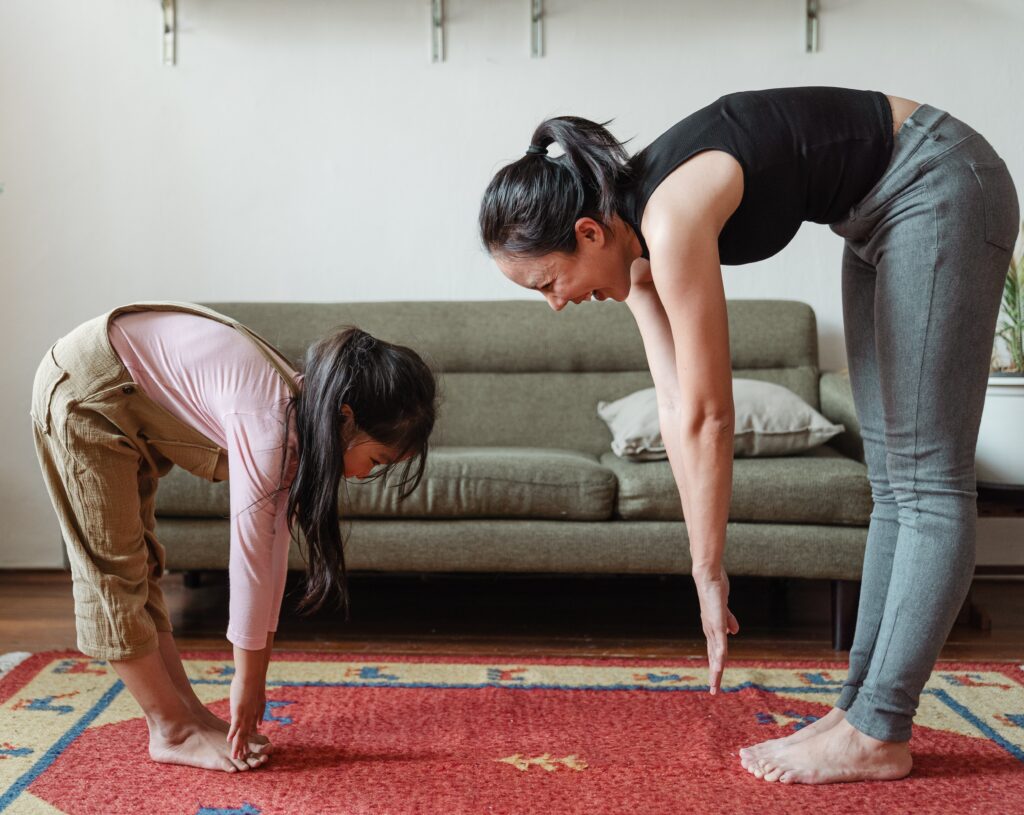
In conclusion, back pain is a common and often debilitating condition that can significantly impact daily life. However, with the right approach, relief is possible. This article has provided you with a comprehensive list of 70 exercises specifically designed to alleviate back pain, including strengthening exercises, stretching routines, and targeted movements to promote flexibility, stability, and overall spinal health.
Remember, when it comes to managing back pain, it’s essential to consult with a healthcare professional or a qualified exercise specialist to ensure that the exercises are suitable for your specific condition and individual needs. They can guide you on proper form, progression, and help tailor the exercises to your abilities.
Incorporating these exercises into your regular routine can have a significant impact on reducing pain, improving posture, and preventing future episodes of back pain. Consistency and patience are key. Start gradually, listen to your body, and progress at your own pace.
Additionally, it’s important to maintain an active and healthy lifestyle, incorporating regular physical activity, proper ergonomics, and good posture habits. Avoid prolonged sitting or standing, and make sure to incorporate regular breaks and movement throughout the day.
While these exercises can provide relief, it’s crucial to address any underlying causes or chronic conditions contributing to your back pain. If your pain persists or worsens, it’s recommended to seek professional medical advice for a comprehensive evaluation and tailored treatment plan.
With commitment, dedication, and the right exercises, you can find relief from back pain and regain control over your daily life. Take the first step today, and start incorporating these exercises into your routine. Here’s to a pain-free back and a healthier, happier you!
